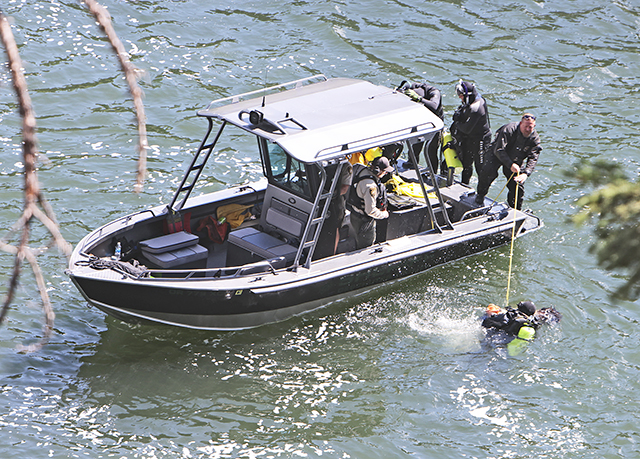Wood takes a thrilling turn
Published 5:00 am Tuesday, July 3, 2012
SANTA CLAUS, Ind. — The first drop is a doozy. From the summit of the wooden roller coaster called the Voyage, 163 feet above the Holiday World theme park in the rolling woodlands of southern Indiana, the track drops 154 feet at a 66-degree angle. The cars quickly reach a top speed of nearly 70 mph.
Those gasp-inducing numbers help explain why more than a million people a year visit Holiday World, which is a ways off the beaten track, and why the Voyage, one of three large wooden coasters at the park, earns high marks from connoisseurs.
Trending
But for Chad Miller, one of the ride’s designers, the most important feature of that first hill is the curve at the top.
“The secret of the first drop is shaping up that parabola and getting it exactly right,” said Miller, 38, an owner of the Gravity Group, one of about a dozen coaster design firms in the world. “It gives you just the right amount of air time, especially in the back seat.”
“Air time” is coaster vernacular for negative G-forces that lift the rider out of the seat and results from changes in the car’s speed. Along its 1.2 miles of track — it’s the second-longest wooden coaster in the world — the Voyage has plenty of steep drops and tight curves that affect speed, making for 24 seconds of air time, an unofficial record.
But shaping parabolas is just one of many tasks facing engineers like Miller. Designing roller coasters is a Jekyll-and-Hyde job: The first priority is to make riders safe; the second is to make them scream.
Shaken, not stirred
Miller and his three partners, who work in a small suite of offices on the outskirts of Cincinnati decorated with coaster posters and odd leftovers from various projects, crunch the numbers carefully, using their own programs (with names like Splinal Tap) that can turn the squiggly lines of a rough initial design into a more polished one. At regular intervals along the route, the software calculates G-forces — up and down, side to side and forward and back — on riders in the front, middle or back of the car.
Trending
The designers stay well within G-force limits for amusement rides established by the standards organization ASTM International (which regulatory agencies in most states follow, too). But their goal is to shake riders up — beginning, on the Voyage, with that first hill, which is immediately followed by two others with drops of more than 100 feet.
After that the hills are less severe, but the track twists and turns (one section is affectionately called the spaghetti bowl), banks up to 90 degrees, weaves in and out of the supporting structure and dips through tunnels and under perfectly safe, but threatening, beams (“head choppers,” another bit of coaster vernacular).
“It’s 6,400 feet of track,” Miller said. “We had so much track to work with, we said, ‘Let’s do some really cool stuff.’”
The Gravity Group works on wooden coasters, which have rails made from laminated pressure-treated pine, laid on wooden boards called ledgers, with only thin ribbons of steel where the car wheels make contact. There are purists who say the supporting structure must be of wood, too, but the Voyage is one of many wooden coasters — the Cyclone at Coney Island is another — with steel supports.
Fervent fans
New wooden coasters are relatively rare these days, as park owners opt for steel-rail designs that are generally faster and higher (and less expensive to maintain) and have more queasiness-producing features like barrel rolls and corkscrew loops. But the Gravity Group is churning out designs. A small coaster opened last year, to positive reviews, at Quassy Amusement Park in Connecticut, and the group has undertaken several projects in China, where the growing middle class has fallen head over heels for amusement parks.
The Voyage, built in 2006 at a cost of $9.5 million, remains the company’s signature ride, consistently ranked among the top wooden coasters in the world by what are politely called coaster enthusiasts.
Miller, with his shaggy haircut and earrings, is something of a rock star among these fans, who think nothing of traveling thousands of miles to ride a particular coaster, over and over and over. About 450 of them showed up last month for a weekend event at Holiday World that included some after-hours riding in the dark. Miller showed up as well, bringing along a steel plate left over from a job in Sweden that he and his partners had autographed for a charity auction.
Enthusiasts say all three of the park’s coasters are excellent, but the Voyage gets the most accolades.
“It’s the best I’ve ever ridden,” said Sister Michelle Sinkhorn, a Benedictine nun who lives nearby in Ferdinand, Ind., and figures she’s taken at least 100 trips on the Voyage.
She keeps her hands up during the whole ride, which lasts 2 minutes, 45 seconds.
“I’m free. I’m a free flyer,” she said.
Byron Hughes, a retired airline employee who had come from Birmingham, Ala., with friends for the weekend, said: “What is amazing to me is how well thought-out this ride was. I like the out-of-control feeling.”
That put-through-a-blender sensation is a trademark of wooden coasters and doesn’t happen by chance. Because they tend to be slower, wooden rides can have tighter twists and turns than steel ones without generating excessive G-forces on riders.
Refining the ride
As at all amusement parks, workers at Holiday World walk the coaster track every morning, looking for signs of wear and tear. If they have to, they will replace beaten-up wood right then, before the ride opens for the day.
Occasionally a more complete overhaul is needed. Holiday World’s owners decided last year that a 400-foot run of track in the spaghetti bowl was too harsh on the riders, so the Gravity Group redesigned the section with a gentler alignment. The track and all its supporting structure were removed and replaced.
Sinkhorn was alarmed when she saw a photograph on the park’s Facebook page showing the spaghetti bowl with the section ripped out.
“Everything was gone,” she said. “My heart stopped.”
When she learned that it was just being overhauled, she had her doubts about the work.
“I thought, ‘What’s that really going to do?’” she said. “But when I rode it a few weeks ago, it was as smooth as a baby’s bum.”








